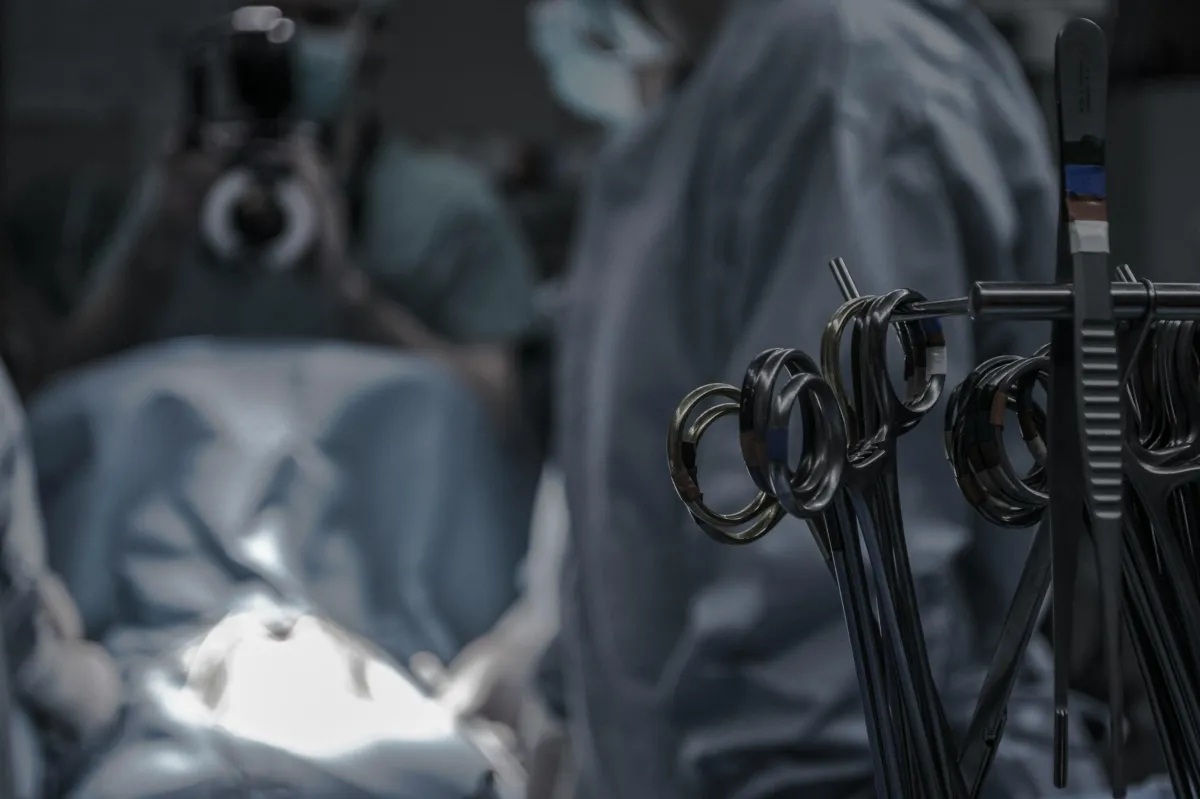
Is Real Spine Surgery the Same as "Sham" Spine Surgery?
“To a large extent, the brain doesn't distinguish real from imaginary, and this underpins some aspects of the placebo effect. When you imagine that something is happening, it really is happening as far as your brain is concerned, and it releases the chemical substance necessary to confirm that what you're imaging is indeed real” - David R. Hamilton, Why Woo-Woo Works: The Surprising Science Behind Meditation, Reiki, Crystals, and Other Alternative Practices
Introduction: Most things we study in medical research involves a control group. One group gets the procedure or the treatment that is being evaluated, another group gets a control. That means they get something that is not expected to make any improvements. A classic example of this is a placebo drug. One group gets the medicine being studied, and one group gets a “sugar pill”, or something that has no actual treatment value.
We want to see if the “real medicine” group gets better results than a fake drug. If both groups get better at the same rate, then a “placebo” effect is observed.
Why does the placebo effect happen? And could it apply to surgery as well?

With that said, here are 4 reasons why you should question your surgeons thoroughly! 👊
1. What is the Placebo effect?

The placebo effect is defined as “a harmless pill, medicine, or procedure prescribed more for the psychological benefit to the patient than for any physiological effect.” Another definition is “a substance that has no therapeutic effect, used as a control in testing new drugs.” While these are probably incomplete definitions of the placebo effect as a whole, they do conjure up some interesting thoughts. “Could merely thinking something is going to get you better make you worse?” Along the same lines, could thinking something is going to make you worse, make you worse?
The answer of course is yes. We know many treatments have a strong placebo effect. The opposite is also true. The term “nocebo” is used to describe the expectation of negative outcomes actually creating negative outcomes.
Here’s an example of a nocebo: You see a doctor for low back pain. They say, “try PT for 6 weeks because we need to do that for insurance. It probably won’t work, but then we’ll get an MRI done.” At this point, you are really fighting an uphill battle, because your expectation is that you are going to have to waste 6 weeks on something that “probably won’t work” in order to get what will work.
Expectations are HUGELY important when we talk about success of treatment. However, that is likely going to be a different blog post...
True control groups are really hard to do in orthopedic medicine, and especially physical therapy. In physical therapy studies, the control group is often “usual care” or a “sham procedure”. Controlling by using usual care is difficult because they are often actually getting a treatment, so their expectations are affected. The “sham procedure” group is hard in PT research because many things don’t have a true “sham”. How do you make “sham” exercise or “sham” massage without letting the person know that its fake?
The same applies for surgery. How do you give someone “sham surgery”? Injections or physical therapy can’t be an effective control group because they are getting an actual treatment. Turns out, they do sham surgeries, although it is often controversial!
2. Sham Surgery Studies

In a review of spine procedures(1), a placebo effect was observed in 53.2% of patients during the 6 months after sham spine procedures. Over half! This mostly included radiofrequency nerve ablations (RFAs), intradiscal electrothermal therapy (IDET) and injections.(1)
Another study looked at sacroiliac joint (SI joint) fusion compared with sham. Those with a fusion got 2.6 points better on a 0-10 pain scale, and the sham group was 1.7 point better.(2) This was determined not to be a statistically significant change.(2)
Another review(3) looked at several procedures to see if sham was just as good as the procedure. It included procedures like RFA, knee arthroscopic debridement for meniscus tears, IDET, vertebroplasty for osteoporotic spine fractures, and Nirschle procedure for tennis elbow.(3)
Here is the conclusion from this review(3): “The results of the systematic review provide preliminary evidence that sham surgery in orthopedics may provide results similar to the actual surgical intervention. Even though sham surgery remains controversial, the fact that sham surgery yields results similar to real surgery highlights the powerful contributions of the brain to pain modulation.”(3)
It seems as though the placebo may place an important role in ORTHOPEDIC SURGERY. Think about that for a moment. Could it be that we don’t need to replace or repair every positive MRI finding we have? Could it be that we could avoid the irreversible effects of surgery and have about the same outcomes at 6-12 months?
3. What Does This Mean?

The issue here is that sham surgery studies are very controversial. Many people do not like the idea. Imagine you went in thinking you were getting a spine procedure, and then ended up with a scar on your back with no actual procedure? You, no doubt, should be informed that you are enrolled in a study and that not having an actual spine surgery is a possible outcome.
There are ethical concerns here.
I, however, think that there are equally valid ethical concerns of performing spine surgeries (or any other orthopedic surgery for that matter) without true controls. If you could get the same results from doing fake surgery, then I severely question the need to do these surgeries in the first place.
I think with the state of where we are at with spine surgeries, I can make a few points. I do not think that spine surgery is largely ineffective. I think it can be a very valuable treatment option for some and provide a lot of relief. There are also some for which is it absolutely necessary to prevent further deterioration, or for emergency cases.
However, for elective spine surgery, I think where we miss the boat is SELECTING the right people to benefit from it. The indications for elective spine surgery are nebulous at best. We already know that some people have a very good outcome, while other have a worsening of function/symptoms that is irreversible and now fall into the category of “failed back surgery syndrome.” Whose fault is this?
4. How to Use This Information

It would wrong of me to state that you could certainly experience a worsening of symptoms with things like physical therapy, chiropractic, acupuncture, or massage. I can’t play favorites here, and I’ve already firmly established my own person bias, being a physical therapist.
The difference, to me, is the risk benefit.
Spine surgery is irreversible damage to our tissue. It can be a planned damage of tissue that actually gives a lot of relief, sometimes life-long relief. But we don’t know if that will be true for us going in. There are no guarantees of course. However, things like PT or exercise can produce a worsening of symptoms, its true. But it will likely not cause irreversible damage to our tissue.
Does exercise have placebo effect? I think likely yes. It is certainly possible that the expectation of improvement by using exercise or other conservative measures is a very real thing. There have been studies looking at exercise vs control and found that both improved at about the same rate.
However, there is no situation where the cumulative effects of exercise don’t vastly outweigh the risk of worsening symptoms acutely. There is almost no situation where getting someone more active and engaging in their environment doesn’t results in a net positive. You are going to be doing this after surgery if you had it anyways.
It is possible that our expectations play a further role than anyone gives it credit for. I very confidently tell people that if you think you get better, you're more likely to get better and if you think you're going to get worse, then you probably will. Sounds hokey, maybe it is. But we're seeing more and more that is probably real.
Please consider subscribing to the CoreyPod.com Blog!
or my YouTube Channel:
www.youtube.com/coreypoddotcom
If you need any help with any of the information I've given or the questions I've asked, please email me at [email protected]
*This is not intended to be medical advice. If you are experiencing pain, always consult with a physician.
If you believe this to be an emergency, please call 911 and seek medical attention.
Resources:
Jamjoom AM, Saeedi RJ, Jamjoom AB. Placebo Effect of Sham Spine Procedures in Chronic Low Back Pain: A Systematic Review. J Pain Res. 2021 Sep 29;14:3057-3065. doi: 10.2147/JPR.S317697. PMID: 34616178; PMCID: PMC8488027.
Randers EM, Gerdhem P, Stuge B, Diarbakerli E, Nordsletten L, Röhrl SM, Kibsgård TJ. The effect of minimally invasive sacroiliac joint fusion compared to sham operation: a double-blind randomized placebo-controlled trial. EClinicalMedicine. 2024 Feb 1;68:102438. doi: 10.1016/j.eclinm.2024.102438. PMID: 38328752; PMCID: PMC10847054.
Louw A, Diener I, Fernández-de-Las-Peñas C, Puentedura EJ. Sham Surgery in Orthopedics: A Systematic Review of the Literature. Pain Med. 2017;18(4):736-750. doi:10.1093/pm/pnw164

